Slave Ship
Brief Synopsis
Cast & Crew
Tay Garnett
Warner Baxter
Wallace Beery
Elizabeth Allen
Mickey Rooney
George Sanders
Film Details
Technical Specs

Synopsis
The barque Wanderer gets the reputation of being a "blood ship" after a worker is killed at its launch in Salem, Massachusetts in 1857. In the next three years, a plague and an explosion kill many others aboard. Bought in an auction by Jim Lovett and renamed the Albatross , the ship is used in the slave trade, which by 1860 has become outlawed everywhere. Jim and his crew, who are also shareholders, risk hanging for large profits, as their ship is one of only three slave ships still operating. After landing in Virginia with a load of slaves, Jim meets Nancy Marlowe of Norfolk. Two months later, after he orders his first mate and friend, Jack Thompson, to get rid of the crew and hire new men who would not work on a slave ship, Jim marries Nancy and brings her aboard to travel to Jamaica, where he plans to buy a plantation and settle down. However, the crew, including Thompson and Swifty, the cabin boy, mutiny and take the ship to Africa. When Jim explains his past to Nancy, she turns away in disappointment. During the trip, Jim stays drunk. In Africa, Nancy reconciles with Jim, but after slaves are selected and sent to the ship, Thompson and crew member Lefty leave Jim ashore to face the unpaid slave dealer Danelo, who tries to kill Jim for tricking him. Jim escapes and reaches the ship where he takes control of the guns and wheel. Knowing that he cannot hold off the men for long, Jim heads for St. Helena, a British island in the Atlantic. When the crew realizes Jim's plan, they send Swifty with food to relieve Jim, who has not slept for seventy-two hours, at the wheel. Although at first Jim suspects a trick, after Nancy takes Swifty's side, Jim gives him a gun and says that he needs another man. Swifty, who all along has rebelled against the viewpoint that he is still a child, is won over, and when the crew approaches, he battles them with Jim and Nancy. When Thompson sees that St. Helena is in sight, he orders the chained slaves thrown overboard, weighted with an anchor, so that no evidence will exist to convict him. As the boat catches fire from a fallen lantern, Jim has the slaves freed so that they can swim to safety. When Thompson is about to attack him, Jim shoots him, but he is then is knocked out after falling for a ruse. When the crew abandons ship, Thompson decides that he cannot leave Jim to hang and puts him in a boat with Swifty and Nancy before he dies as the ship explodes in flames. At the trial, Nancy pleads for Jim, explaining that he freed the slaves even though he knew their existence would be proof against him. Later, on their plantation in Jamaica, Jim and Nancy's enjoyment of the quiet life is momentarily disrupted as Swifty fights with Scraps, the ship's drunken cook who rescued Nancy's dog, for a piece of pie.

Director

Tay Garnett
Cast

Warner Baxter

Wallace Beery

Elizabeth Allen

Mickey Rooney

George Sanders
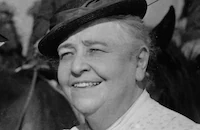
Jane Darwell
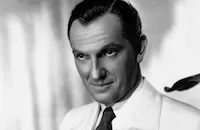
Joseph Schildkraut

Miles Mander
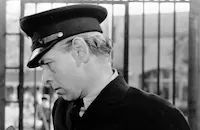
Arthur Hohl

Douglas Scott

Minna Gombell

Billy Bevan
Francis Ford
Jane Jones

J. Farrell Macdonald
J. P. Mcgowan

De Witt Jennings
Paul Hurst
Dorothy Christy
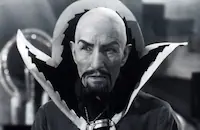
Charles Middleton
Dewey Robinson

Holmes Herbert
Edwin Maxwell
Herbert Heywood
Winter Hall
Marilyn Knowlden
Arthur Aylesworth

Scotty Beckett
Chester Gan
Bull Anderson
Sven Borg
Bobby Dunn
John Wallace
Frank Meredith
Bob St. Angelo
Jack Low
Jack Stoney
John Bleifer
Len Powers
Richard Clark
Jack Byron
Dale Van Sickle
George Bruggeman
Larry Dodds
Remy Oldstead
Art Dupuis
George Du Count
Charles Griffin
James Burtis
James C. Morton
Stymie Beard
Otto Fries
Mel Kalish
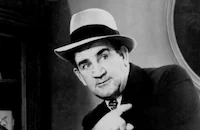
Tom Kennedy
Anita Brown
Eddie Dunn
Lionel Pape
John Burton
Landers Stevens
Russ Clark

Lon Chaney Jr.
Fred Kelsey
Crew
Dave Anderson
Don Anderson
Joe Behm
Bob Bertrand
Sid Bowen
Otto Brower
Alfred Bruzlin
Tony Carnagle
Chris Christensen
Bill Cooley
Gordon Cooper
Red Crawford
Ed. Ebele
William Faulkner
Walter Ferris
Stephen Foster
Charlie Graham
W. Grefrath
Sam Hellman
Roger Heman
Bob Herndon
Nunnally Johnson
Buddy King
Bob Lee
Gladys Lehman
Thomas Little
Robert Mack
Booth Mccracken
Phillip Moore
Alfred Newman
Alfred Newman
Lloyd Nosler
Carrie O'neil
Ernest Palmer
Helen Parker
Jack Percy
Hans Peters
Elmer Poggi
Gilbert Pratt
H. A. Root
Royer
H. S. Thompson
Lamar Trotti
Darryl F. Zanuck

Film Details
Technical Specs

Quotes
Trivia
Notes
The working title of this film was The Last Slaver. Notes from a conference with Darryl Zanuck concerning the second revised treatment, in the Twentieth Century-Fox Produced Scripts Collection at the UCLA Theater Arts Library, reveal a number of his concerns: "While in all probability the picture will be produced on a large scale, it is unlikely that we will have a name like [Clark] Gable, for instance, to cover up any of its possible weaknesses. Therefore, Mr. Zanuck feels that he cannot stress too much the fact that we must concentrate on the writing of an expert script that stands completely on its own....Watch, too, that the British are not made to appear stupid....Note: It is very important for censorship purposes that we indicate very plainly that the South is as radically opposed to slave-running as the North." Correspondence in the Twentieth Century-Fox Records of the Legal Department, also at UCLA, indicates that although William Faulkner is credited onscreen with the story, he actually only contributed "additional original dialogue" to a screenplay by Sam Hellman and Gladys Lehman. A note in the files states, "Mr. Zanuck and the producer decided to give Faulkner screen credit and this was the only way they could do it, as Lehman, Hellman and Trotti had been given credit for screenplay, which is the Academy limit." At the time, AMPAS limited screen credits for screenplay to three names. Faulkner is quoted in a modern source concerning his contribution: "I'm a motion picture doctor. When they run into a section they don't like, I rework it and continue to rework it until they do like it. In Slave Ship, I reworked sections. I don't write scripts. I don't know enough about it." According to a Hollywood Reporter news item, Trotti was assigned to the film after the proposed film The Siege of Alcazar had been canceled due to numerous protests.
According to news items, Wallace Beery and Mickey Rooney were borrowed from M-G-M for the film. According to Motion Picture Herald, the actual filming took 102 days. New York Times noted that the production costs exceeded $1,000,000. According to news items, Otto Brower, with a camera and technical crew, took a thirty-day trip to the Florida Keys and Bermuda to shoot offshore scenes, and a company of forty traveled to Catalina Island to shoot sea scenes. According to a August 1936 Hollywood Reporter news item, John Ford was originally scheduled to direct, but he asked to be excused in order to take a vacation trip to Europe following the production of three films he directed in quick succession, and Howard Hawks was announced as director. According to New York Times, in November 1936, Tay Garnett, who had acquired the assignment of director, was suddenly switched to Love Is News (see AFI Catalog of Feature Films, 1931-40; F3.2604). When that film was completed, he began shooting this one. According to a Hollywood Reporter news item, Peter Lorre was signed on December 15, 1936 to play the role of the slave dealer, which ultimately went to Joseph Schildkraut, who was signed a few days before production began. John Carradine, who was not in the released film, was added to the cast on December 18, 1936, according to Hollywood Reporter. Mary Rogers, the daughter of the late Will Rogers, was signed for the role of Nancy Marlowe but took sick with the flu during production, and Elizabeth Allan, on the day M-G-M agreed to a severance of their contract with her, signed to replace Rogers, according to news items. Tay Garnett, in his autobiography, related that the script was devised to co-star Clark Gable with Wallace Beery and Mickey Rooney, but M-G-M would not let Gable go. In the legal records, correspondence dated February 22, 1937, after the initial shooting was completed, states that Granville Bates played the "old man." As screen credits list Herbert Heywood in that role, it is possible that during the shooting of added scenes in March 1937, Bates was replaced by Heywood. According to a Los Angeles Evening News news item, the barquentine Lottie Carson was used in this film. According to a modern source, blacks who were servants and chauffeurs to Hollywood stars and producers were hired to play slaves.












